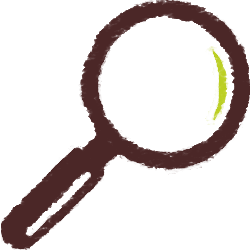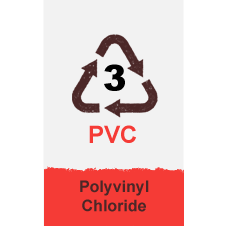PVC comes in two types, rigid and flexible, and is made from oil and salt. It is most commonly found in plumbing pipes.
Rigid PVC (RPVC) is used to make:
- Doors and windows
- Pipes
- Vinyl music records
- Fencing
- Non-food bottles
- Children’s toys eg hula hoops
- Credit cards
- Signage
- Heat-shrinking tubes
 Recycling
Recycling
In its flexible form (which is more widely used in packaging), PVC is very difficult to recycle because of its high level of chlorine. It is therefore very unlikely to be collected and recycled in a mixed plastic stream. It can be recycled into for flooring, shoe soles, wellington (“rubber”) boots and shoes.
Rigid PVC, which is cheap to make and weather resistant is more likely to be recycled as it will usually be removed from a house by a business (in the form of windows or piping), allowing it to be sent for recycling. PVC can be very dangerous if it is burned as it can release harmful chemicals, so in its rigid form it is important that it is recycled appropriately at the end of its life.
 Properties
Properties
- Because PVC is relatively impervious to sunlight and weather its good for outdoor use
- Acid and alkali resistance
- Flame retardant
- Stiff and strong
How can I tell if something is made of PVC? See CIWM/WasteAid guide
1. Look: It often has a 3 printed on it.
- Rigid PVC is strong, tough, can be clear or opaque, and softens at 80˚C.
- Flexible PVC is plasticised, clear, elastic and can be welded by solvents.
2. Float test: PVC will sink in water.
3. DO NOT perform the flame test. Stay safe: do not burn PVC. It produces extremely toxic fumes.
 WARNING
WARNING
- PVC is dubbed the “poison plastic” because it contains numerous toxins which it can leach throughout its entire life cycle
- PVC releases chloride when heated up, HCL and dioxins when burned
- Overheating causes degradation
- Brittle below 0°C
- Discolour in strong UV light
- The additives in PVC are also known to cause skin reactions such as allergic contact dermatitis
Sources


 Recycling
Recycling Properties
Properties WARNING
WARNING

